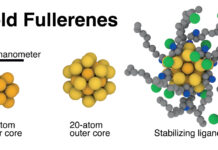
Scientists have developed a hybrid conductive material – part elastic polymer, part liquid metal – that can be bent and stretched at will and could pave the way for the next generation of flexible electronics. Circuits made with this material can take most two-dimensional shapes and are also non-toxic, according to a study published in the journal iScience.
“These are the first flexible electronics that are at once highly conductive and stretchable, fully biocompatible, and able to be fabricated conveniently across size scales with micro-feature precision,” said Xingyu Jiang, a professor at the National Center for Nanoscience and Technology in China. “We believe that they will have broad applications for both wearable electronics and implantable devices,” said Jiang.
The material that the researchers fashioned is called a metal-polymer conductor (MPC), so called because it is a combination of two components with very different yet equally desirable properties. The metals, in this case, are not familiar conductive solids, such as copper, silver, or gold, but rather gallium and indium, which exist as thick, syrupy liquids that still permit electricity to flow.
The researchers found that embedding globs of this liquid metal mixture within a supporting network of silicone-based polymer yielded mechanically resilient materials with enough conductivity to support functioning circuits. Up close, the structure of the MPC can be likened to round liquid metal islands floating in a sea of polymer, with a liquid metal mantle underneath to ensure full conductivity. The researchers successfully tried out different MPC formulations in a variety of applications, including in sensors for wearable keyboard gloves and as electrodes for stimulating the passage of DNA through the membranes of live cells.
Read more: New material for next-gen flexible, stretchy electronics developed
thumbnail courtesy of financialexpress.com















